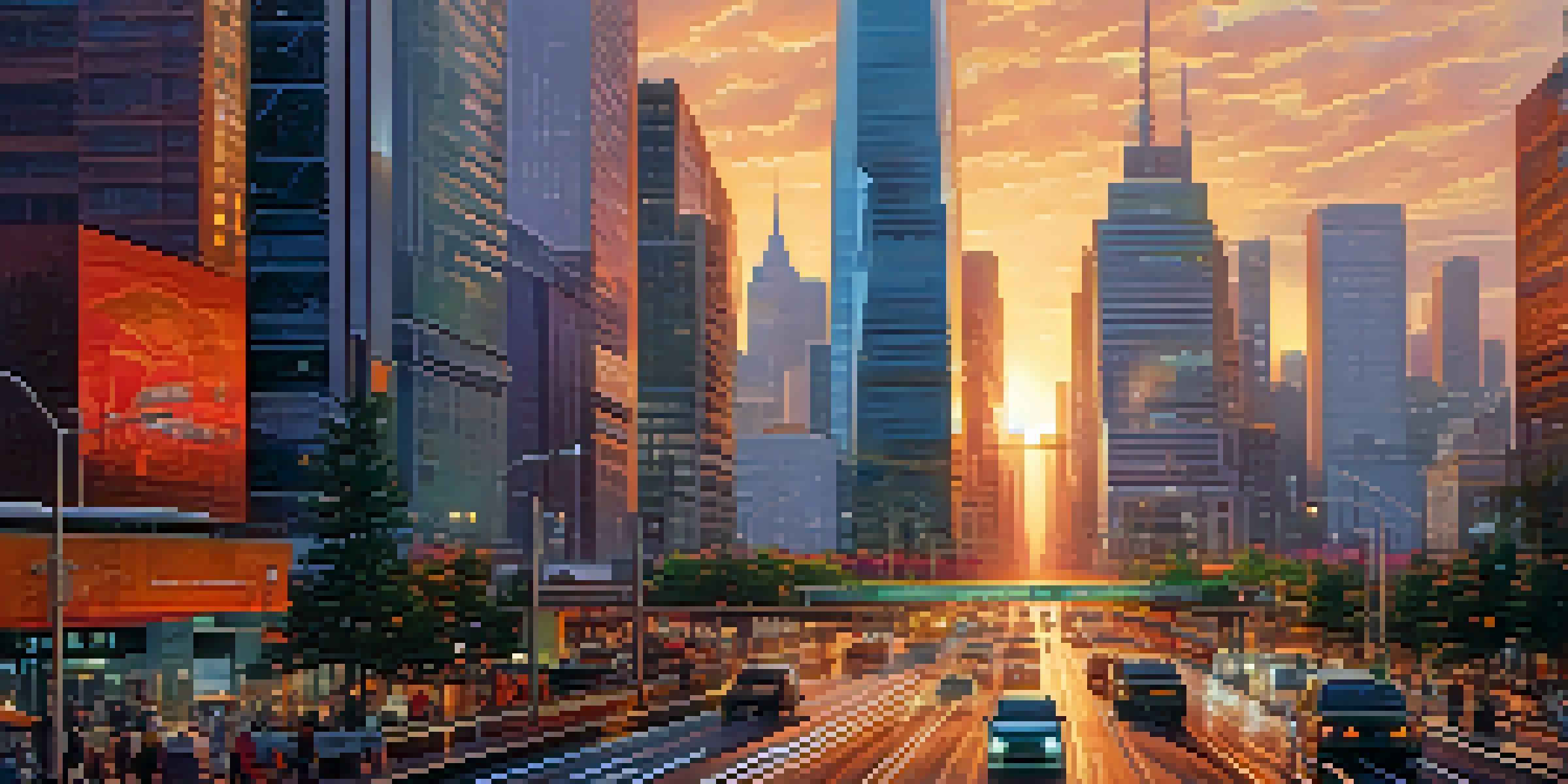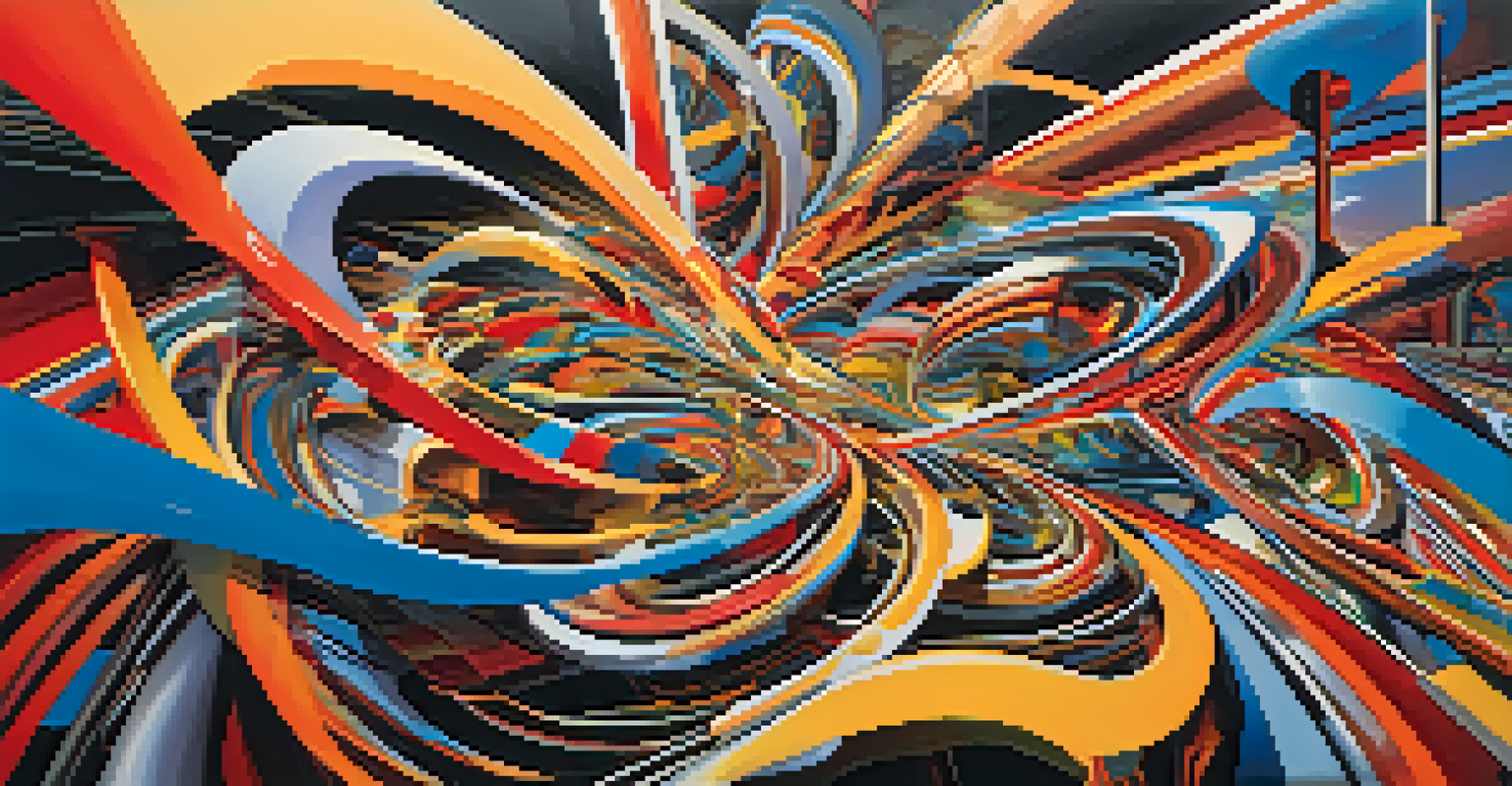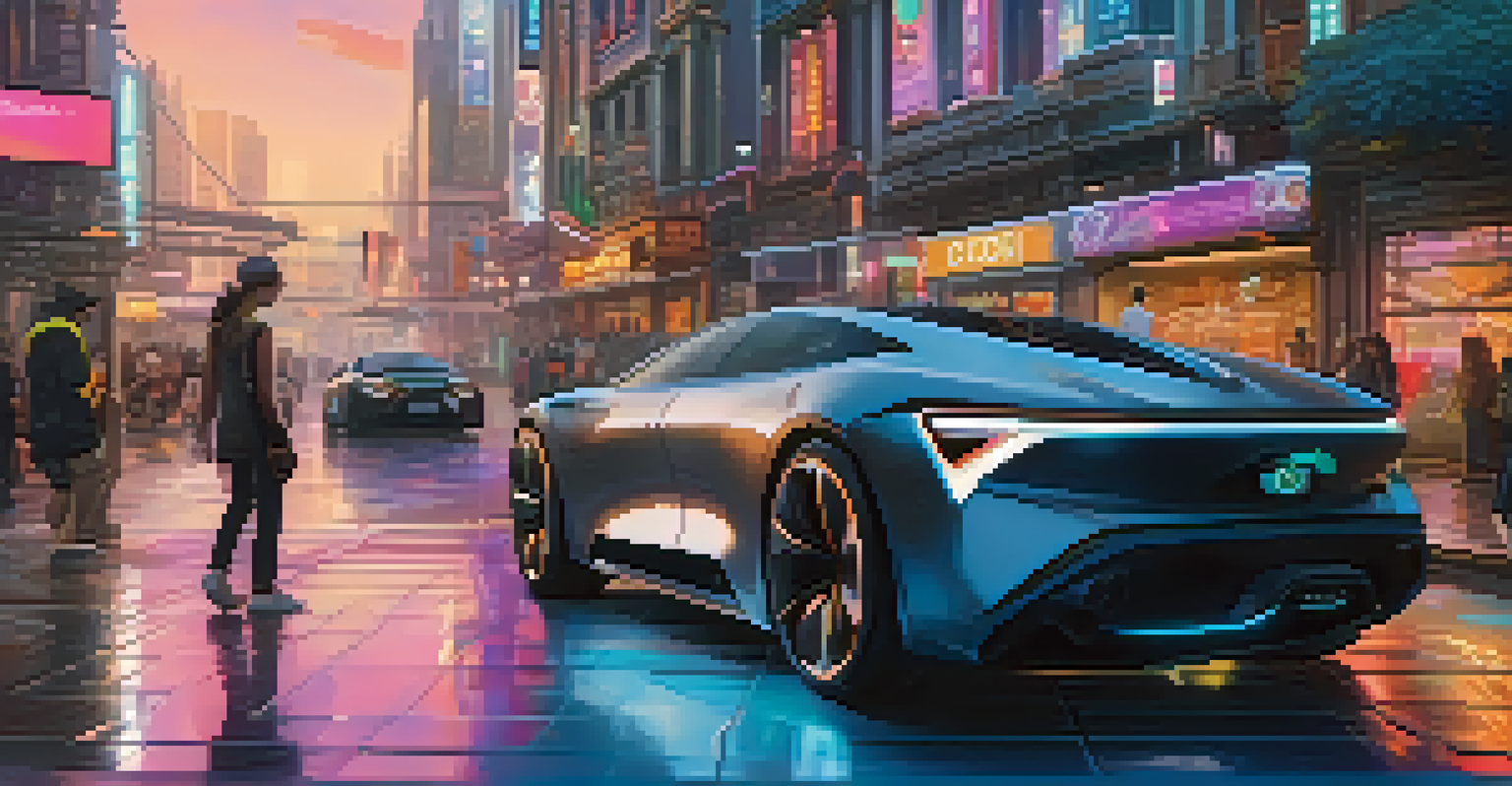The Role of Technology in Futurist Painting

What is Futurist Painting and Its Core Concepts?
Futurist painting is a vibrant art movement that emerged in the early 20th century, emphasizing speed, technology, and modernity. Artists sought to capture the dynamic energy of contemporary life, often depicting movement and the sensation of the modern world. With its roots in Italy, futurism challenged traditional artistic conventions, aiming to break free from the past and embrace the future.
Art is the most beautiful of all lies.
The core concepts of futurism involve a fascination with machines, urban landscapes, and the idea of progress. Artists like Umberto Boccioni and Giacomo Balla experimented with color and form to express the essence of motion and the thrill of modernity. By focusing on the interplay between light and movement, futurist painters created works that felt alive and pulsating with energy.
As we delve into the role of technology, it’s important to recognize that futurist painting was born from an era of rapid industrial change. This relationship between art and technology laid the groundwork for contemporary artists to explore new mediums and tools that would further expand the boundaries of creativity.
The Influence of Digital Tools on Futurist Techniques
Digital tools have revolutionized the way artists create and conceptualize their work, particularly in the realm of futurist painting. Software like Adobe Photoshop and Corel Painter allows for experimentation with colors, layers, and textures that would be challenging to achieve with traditional mediums. This flexibility enables artists to refine their ideas quickly and explore various interpretations of their vision.

Moreover, technology facilitates the incorporation of multimedia elements into painting. Artists can blend video, animation, and sound with traditional painting techniques, creating immersive experiences that reflect the frenetic pace of modern life. This synergy between different mediums can evoke a deeper emotional response and connect with audiences on various levels.
Tech Transforms Futurist Art
Digital tools and technologies have revolutionized futurist painting, allowing artists to experiment with new mediums and create immersive experiences.
Additionally, digital tools also enable artists to simulate the effects of movement and change in their work. By utilizing techniques like animation or augmented reality, futurist concepts can be brought to life, allowing viewers to experience the artwork in a dynamic way that mirrors the themes of speed and progress.
Virtual Reality: A New Dimension in Futurist Art
Virtual reality (VR) is taking futurist painting to new heights by allowing artists and audiences to step inside the artwork. Through VR, artists can create immersive environments that envelop viewers, making them feel as if they are part of the painting itself. This technology enables a unique interaction with the themes of movement and modernity that are central to futurism.
Every act of creation is first an act of destruction.
For instance, an artist can design a virtual world that embodies the chaos of urban life, complete with moving vehicles, bustling crowds, and shifting landscapes. Viewers can walk through this digital realm, experiencing the energy and dynamism that futurist painters aimed to capture. This level of engagement transforms the traditional viewing experience into an active exploration of art.
As VR continues to evolve, its potential in futurist painting is boundless. Artists can push their creative boundaries and challenge the viewer's perception of reality, making the artwork not just a visual experience but a visceral one as well.
Artificial Intelligence: Collaborator in Creativity
Artificial intelligence (AI) is emerging as a surprising collaborator in the art world, including futurist painting. AI algorithms can analyze vast amounts of data, learn from existing artworks, and even generate new pieces that reflect the style and themes of futurism. This capability opens up exciting possibilities for artists looking to innovate and experiment.
For example, some artists are using AI to assist in generating color palettes, textures, or even entire compositions. This partnership can lead to unexpected results, blending human creativity with machine learning in a way that feels distinctly modern. It challenges the notion of authorship and raises questions about the role of the artist in a technology-driven world.
AI as an Artistic Partner
Artificial intelligence is emerging as a collaborator in futurist painting, enabling artists to innovate and explore new creative possibilities.
Moreover, AI can also help in curating and personalizing experiences for viewers. By analyzing individual preferences, AI can recommend artworks or exhibitions that resonate with a person's taste, creating a more engaging interaction with futurist themes.
Social Media: Amplifying the Reach of Futurist Art
Social media platforms have become powerful tools for artists to showcase their work and connect with audiences around the globe. For futurist painters, these platforms offer an opportunity to share their vision of modernity and innovation in real-time. The visual nature of platforms like Instagram and Pinterest allows for immediate feedback and interaction with viewers.
Artists can document their creative process, share behind-the-scenes glimpses, and engage in conversations about their inspirations. This transparency not only builds a community but also enhances the narrative surrounding their work, making it more relatable to a broader audience. The immediacy of social media allows futurist art to reach beyond traditional gallery spaces.
Furthermore, the viral potential of social media can propel futurist paintings into the mainstream. A single post can capture the attention of thousands, creating a ripple effect that elevates the artist's profile and fosters a greater appreciation for the themes of speed, technology, and modernity that futurism embodies.
Sustainability and Technology in Futurist Painting
As technology evolves, so does the conversation around sustainability in the art world. Futurist painters are increasingly aware of the environmental impact of their materials and methods. Innovative technologies now allow for the use of eco-friendly paints and sustainable practices, aligning with the forward-thinking ethos of futurism.
Artists are exploring ways to reduce waste and create works that reflect their commitment to the planet. For instance, digital art eliminates the need for physical materials and can be displayed in various formats without contributing to pollution. This shift towards sustainable practices is a natural extension of the futurist movement, which champions progress and innovation.
Sustainability in Modern Art
Futurist painters are increasingly integrating sustainable practices and eco-friendly materials into their work, reflecting a commitment to environmental consciousness.
Additionally, futurist themes can also address environmental concerns directly, using art as a medium for advocacy. By integrating technology and sustainability, artists can create pieces that not only envision a vibrant future but also inspire action toward a more sustainable world.
The Future of Futurist Painting in a Tech-Driven World
As we look ahead, the intersection of technology and futurist painting appears promising. Ongoing advancements in digital tools, VR, AI, and social media will continue to reshape how artists express their ideas and connect with audiences. The themes of futurism remain relevant as society grapples with rapid technological changes.
Futurist artists will likely embrace these innovations, using them to push boundaries and explore new dimensions of creativity. The fusion of traditional techniques with contemporary technology can give rise to entirely new forms of artistic expression that capture the essence of our ever-evolving world.

Ultimately, the role of technology in futurist painting is not just about new tools but also about fostering dialogue and engagement around the themes of progress, speed, and the future. As artists navigate this exciting landscape, they will undoubtedly continue to inspire and challenge us to envision a world filled with possibility.